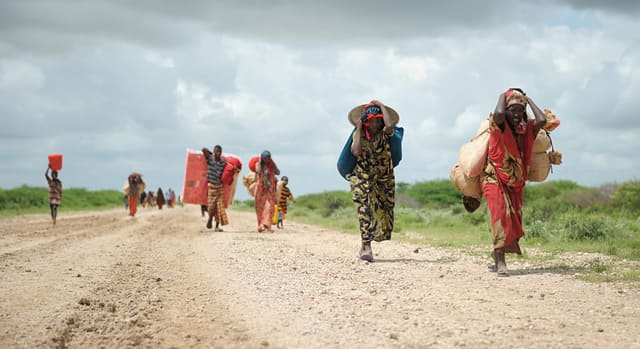The ongoing conflict in Somalia has evolved over the years, with a notable surge in political violence in 2023, partly attributed to the actions of the extremist group al-Shabaab. Here’s a breakdown of significant events in 2023 as part of the broader Somali Civil War (2009-present):
- January 4: Bombings occurred in Mahas, marking one of the violent events in the early part of the year1.
- April 11: United Nations Secretary-General António Guterres visited Mogadishu for talks regarding aid for the war-torn region1.
- April 22: 21 individuals were killed in Masagaway District due to the conflict1.
- May 4: The Somali government reported a 70% decrease in al-Shabab attacks, indicating a temporary respite in violence1.
- May 26: Al-Shabaab launched an attack on Ugandan forces during the Battle of Buulo Mareer1.
- June 10: A hotel attack in Mogadishu carried out, adding to the tally of violent incidents within the city1.
- July 24: An al-Shabaab militant suicide-bombed an army training camp in Mogadishu, resulting in at least 30 Somali Army soldiers killed1.
- August 26: An American airstrike killed at least 13 al-Shabaab militants near Seiera, northwest of Kismayo1.
- September 29: A suicide bomber targeted a tea shop in Mogadishu, causing at least seven deaths1.
- October 4: Fighting between Somali Army soldiers and al-Shabaab militants in Galmudug state’s Shabelow forest led to at least 20 soldiers killed1.

In a broader context, between September 9 and October 13, 2023, there were 279 recorded political violence events with 1,752 reported fatalities in Somalia. Notably, political violence increased by over 80% in Hirshabelle and Galmudug states following the launch of Operation Black Lion against al-Shabaab on August 6 by the government2. On June 22, the United Nations warned about the potential loss of hard-won gains in Somalia despite progress in tackling terrorism and advancing the electoral process. The warning highlighted the need for extra effort and funding to address multiple threats, including climate shocks and a looming food crisis amid the violence3.
The international community, including countries like Qatar, Somalia, Turkey, the UAE, the UK, and the US, expressed concern over growing conflict in the breakaway region of Somaliland, particularly around a disputed town, indicating the geopolitical complexities and international dimensions of the conflict4.
This History of conflict in Somalia’s region
The Horn of Africa, where Somalia is located, has a long history of conflicts stemming from various causes including political discord, territorial disputes, and interventions by foreign entities. Here’s a historical overview of conflicts in Somalia leading up to the most recent one:
- Pre-Colonial Period: Various Somali sultanates and kingdoms often engaged in conflicts over territories and resources.
- Colonial Period (late 19th to mid-20th century): European powers, mainly Italy and Britain, colonized parts of Somalia leading to territorial divisions and rivalries.
- Post-Independence (1960-1969): After gaining independence and unification in 1960, political instability and competition among clans led to conflicts.
- Military Rule (1969-1991): General Siad Barre seized power in 1969, leading to authoritarian rule. Opposition to his regime, including the Somali Salvation Democratic Front (SSDF), the Somali Democratic Movement (SDM), and the Somali National Movement (SNM), intensified leading to a civil war.
- Civil War (1991-2000s): The overthrow of Barre’s regime in 1991 led to a power vacuum and a protracted civil war among various factions seeking control. This period saw humanitarian crises and interventions by UN and US forces, most notably the 1992-1995 UN mission and the 1993 Battle of Mogadishu.
- Transitional Period (2000-2012): Several attempts to establish a Transitional Federal Government (TFG) were made with varying degrees of success. The Union of Islamic Courts (UIC) briefly took control in 2006 before being ousted by Ethiopian forces.
- Al-Shabaab Insurgency (2007-present): The Islamist extremist group Al-Shabaab emerged as a major threat, attempting to establish a strict form of Islamic law. African Union forces, alongside Somali government forces, have been fighting against Al-Shabaab.
- Federal Period (2012-present): A new Federal Government was established in 2012, aiming to restore stability. However, political discord among federal states, clan rivalries, and the continued threat from Al-Shabaab contribute to ongoing conflict.
Through all this, is it safe to travel to Somalia?
I’d need to test with you here. Which isn’t something I usually do! I enjoy reading a submit that may make folks think. Additionally, thanks for permitting me to remark!